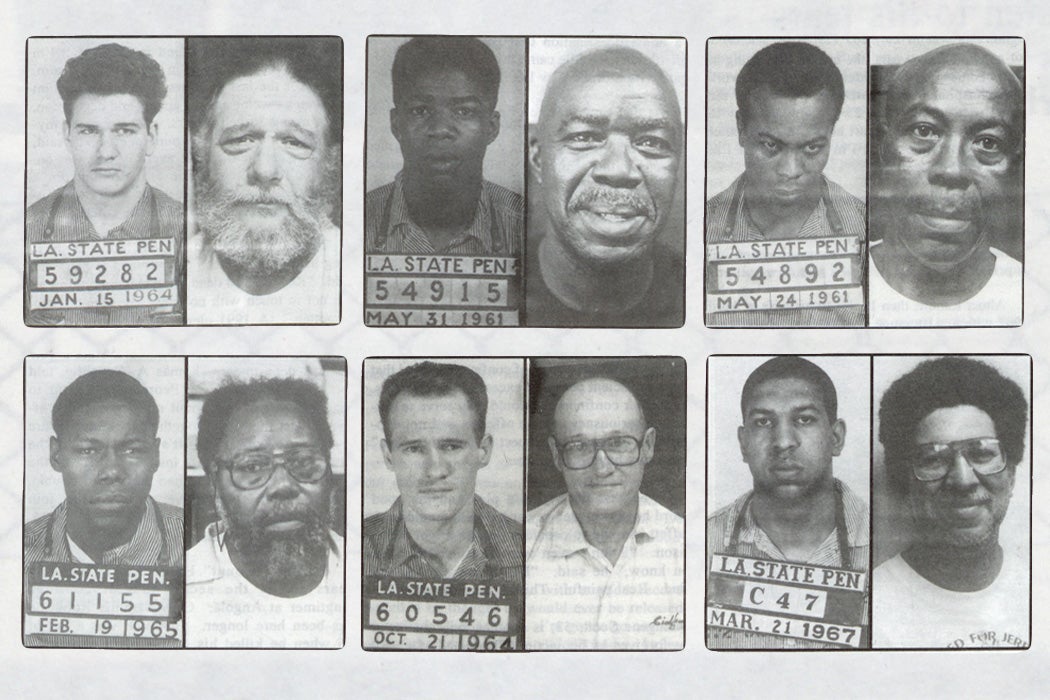Life in prison without the possibility of parole was deemed too lenient a sentence for Howard Christensen, despite the fact it was the most severe punishment under South Dakota law in 1937. To the chagrin of the state and the posse of vigilantes who would rather have seen him executed, 17-year-old Christensen and his co-defendant were instead sentenced to life behind bars. This case, the murder of Ada Carey, was so infamous it inspired South Dakota to reinstate the death penalty two years later, under the notion that a life sentence was too light.
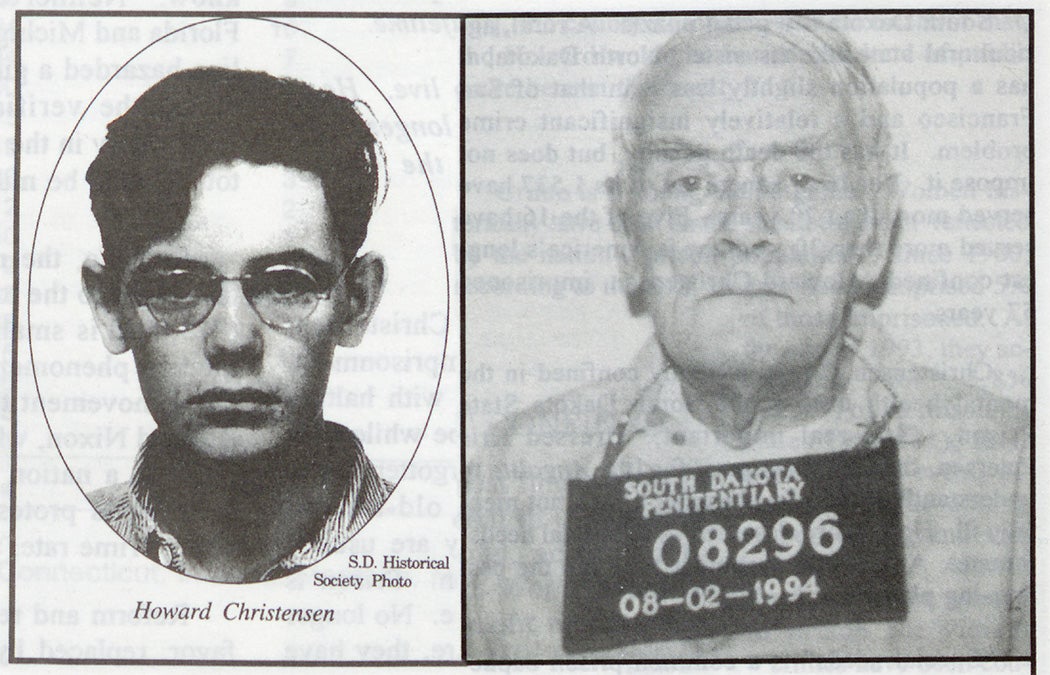
Unbeknownst to Christensen, nearly six decades later he would be profiled in the famous Louisiana State Penitentiary prison newspaper, The Angolite, for holding the ignominious title of longest-serving prisoner in the entire nation. Christensen was finally granted parole by the state of South Dakota and released to a nursing home in 1995. He was 75 years old. His is but one of the stories that reveal the surprising realities of life in prison and death by incarceration.
In September of 1994, the editors and writers of The Angolite sought to identify everyone in America who had served two decades or more in prison in a piece titled, “The Living Dead.” They did not mince words describing men like Christensen, who was 74 at the time of the story: “[They are] grey and withered by decades of imprisonment. Faded men who plod prison yards with halting steps, nursing a spark of ersatz hope while they wait to die.”
Weekly Newsletter
In a special issue on “The Living Dead,” the publication details the stories of people who had served an unthinkable number of decades behind bars and astutely points out that the number of people serving sentences of two decades or more was only growing. That prediction proved painfully accurate, as Hope Reese writes in, “What Should We Do about Our Aging Prison Population?”
In 1994, the problem of prison sentences that constituted life or de facto life (50 years or more) felt dire to theI writers of The Angolite article. They counted 2,099 “long-timers” compared to the then 775,624 total number of incarcerated people, or 0.3%. But those statistics pale in comparison to today’s. Now, that number is over 200,000 out of the 1.4 million total people in prison. According to The Sentencing Project, one in seven incarcerated people are serving a life sentence. The Angolite noted an uptick in 1994, but it increased exponentially from there.
Reveal Digital’s American Prison Newspapers collection offers deep insight to the little-known nuance of a life sentence, in publications from The Angolite to The Nash News, which is published in North Carolina. Prisons are not blackholes nor time warps; those sentenced to be confined in them do not cease existing. Instead, their lives take on new meaning, new routines, and new horrors. Depending on the county or parish, the state law, and the date of sentencing, a “life sentence” can mean a wide variety of things, making the harshness of it feel almost arbitrary. When people commit violence, society condemns them to prison, where unfathomable violence is often committed against them. As those sentenced to die of old age behind bars become frail and feeble, their minds and bodies bear the scars of being entrapped within the “vortex of violence” that is prison. Their situation begs the perennial question: what is the point of prison?
Without directly addressing that question, The Angolite got to the heart of it, by asking each state to provide the name and age of its oldest incarcerated person; some did not know or had trouble locating them. Others would not say. Out of the surveyed states, Louisiana topped the list with 344 people who had served over two decades in prison; of those, 288 were living in Angola. The Angolite then interviewed many of them, including the longest-serving woman and man in Louisiana.
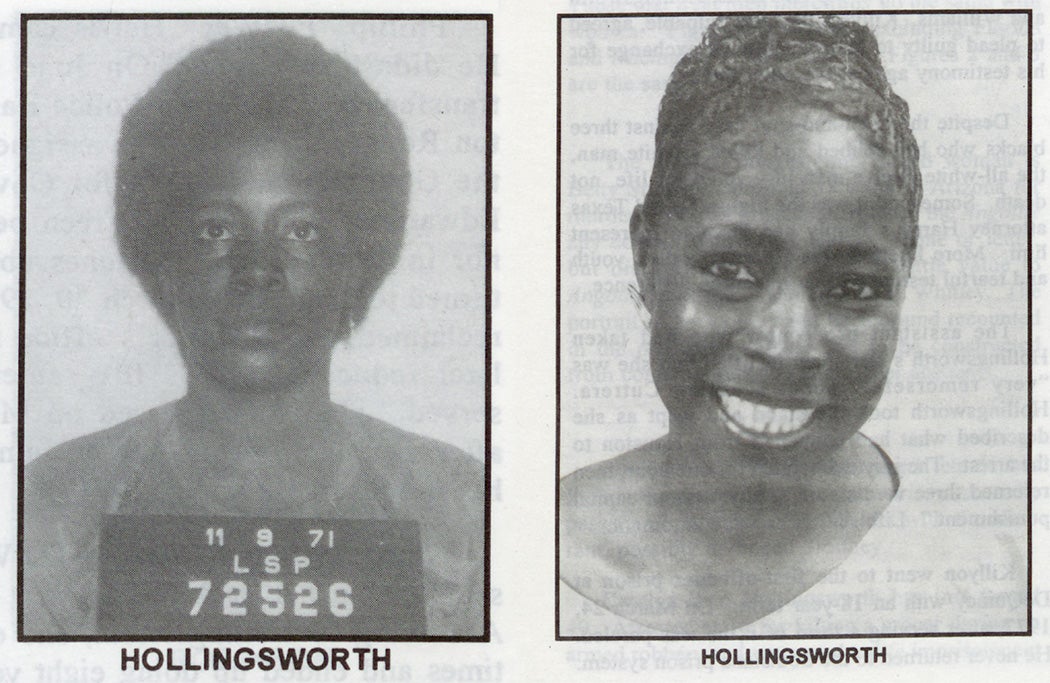
Carolyn Ann Hollingsworth was convicted of killing a store clerk during an armed robbery and sentenced to life. She was 16. After 23 years in prison, the interviewer described her as, “intelligent, alert, scrappy.” She described fighting off other women who wanted to sexually assault her and racking up disciplinary tickets, which she says were easy to get: “You get a report for laughing too loud.”

The longest-serving man, Sammie Robinson, Jr., had then been in prison for over 40 years. He came to Angola at 17 when “discipline was enforced by hickory stick, ax handle, and leather strap.”
Robinson says he defended himself from sexual assault and other commonplace violence, and it was while he was incarcerated that during the course of an assault he killed another incarcerated man. Robinson’s original sentence for rape was vacated, but he still had a life sentence for killing the prisoner who assaulted him. He then went on to commit other violent acts, attacking a guard and stabbing another man, all of which were inevitable to Robinson and to the writer: “Robinson has no regrets. Says if he had done anything different, he would probably be dead. Adaptability is key to survival. He adapted to the jungle to which he was exiled, became part of it.”
His body also bears the marks of violence. Early into his prison sentence, a third of Robinson’s body was burned when a man attacked him with lighter fluid and flame. “A testament of agony,” his body bears “slash, stab and burn scars” and the psychic injuries of living besieged by brutality.
In 2019, a judge ruled that Robinson had forfeited all of his appeals. Robinson died in 2020, still incarcerated. He was 83 years old. The original charge that sent him to prison was proven invalid, yet he could never escape the sheer violence of the place to which he was confined.
Before his death, he was interviewed as part of The Visiting Room Project, along with 100 other people serving life sentences.
“I survived,” he tells the camera, referring to his six plus decades in prison. “I don’t know how I survived. I had a tough time.” He reflects on forced labor, changes throughout the decades, and the incident that left him with third-degree burns. His interview can be watched in full.
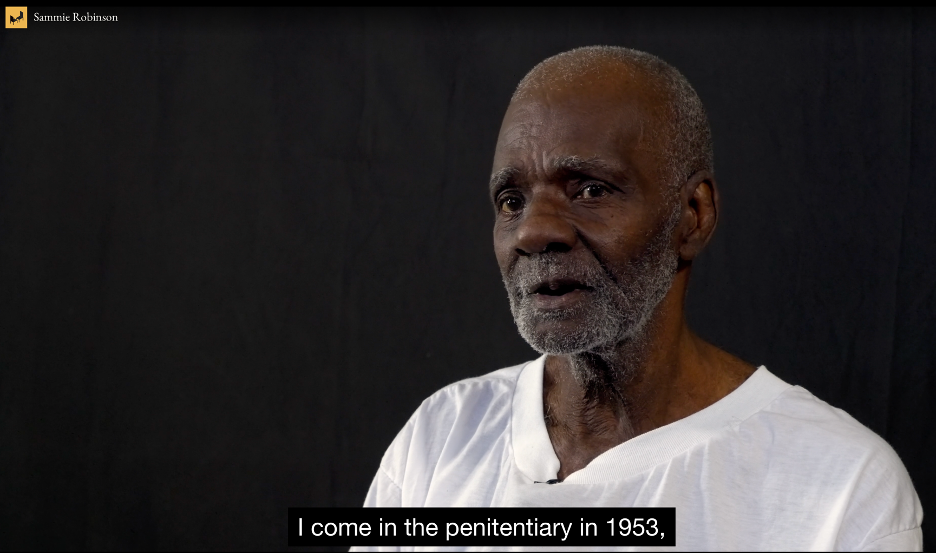
“Like I said, I’ve been here all my life. I ain’t never really had a chance to get out,” Robinson told The Visiting Room Project. He died within a few years at the age of 83.
“Life without parole in Louisiana is really an abstraction,” Dr. Marcus Kondkar, one of the The Visiting Room Project’s co-creators and sociology professor, told The Guardian. “Even academics who study it think of it as a structural problem but still don’t tie it to an individual’s life.” Their project attempts to showcase the life—the human—beyond the life sentence.
Many of the other Louisianan men incarcerated in Angola have similar stories. The ultimate result, according to The Angolite, is “the archetypical lifer, a totally isolated man.” As the publication points out, “the average longtime [is] a black murderer in his early fifties.” Today, that has changed very little except that the age has come down; more young men are being sentenced to life in prison and the older men have died. Today, 30% of lifers are over 55, and over two-thirds are people of color. In Louisiana, 73% of lifers are Black.
* * *
The Angolite takes pains to convey, America was and still is an outlier in sentence length, proportionate to its lack of faith in rehabilitation and reconciliation. To make this point, Douglas Dennis, the author of the article “The Living Dead,” compares people like Christensen to the sentences of ex-Nazis convicted or war crimes, pointing out that many were pardoned after 1950. Kurt Franz, a commander of Treblinka, was released after serving 34 years in prison for killing 134 people and facilitating the murder of hundreds of thousands. Meanwhile close to 1,500 people remain in prison because of crimes they committed before they turned 18. The United States is quite unique for the frequency with which it sentences juveniles to die in the custody of the state, either by execution (now outlawed) or by incarceration. Execution is a legally permissible sentence for any teenager who has reached their 18th birthday, despite neuroscience that indicates adolescent brains are still developing well beyond that point.
In addition to an increase in people sentenced and the sentence length in the past decades, Louisiana also reduced the use of executive clemency which had “provided lifers viable access to freedom,” according to The Angolite. The general practice throughout much of the 20th century provided clemency to lifers after 10 years and 6 months (called the 10/6 rule). A former Angola warden at the time said “almost 99% of all the lifers” were released through clemency. More than a legal mechanism for potential release, it was a bringer of hope. Criminal defendants, judges, prosecutors, and defense attorneys all relied on the 10/6 rule as a way to encourage people to accept life sentences as plea agreements.
But then in 1972, the Supreme Court of the United States ruled in Furman v. Georgia that the existing death penalty statutes were unconstitutional across the nation. Forty-three men on Angola’s death row were suddenly eligible for the 10/6 rule. So, the Director of Corrections Elayn Hunt simply stopped the practice with no explanation in order to not politically endanger the state by releasing someone who had been sentenced to die. There was no official notification, men in Angola slowly started to realized that the 10/6 rule was over, and no one had told them.
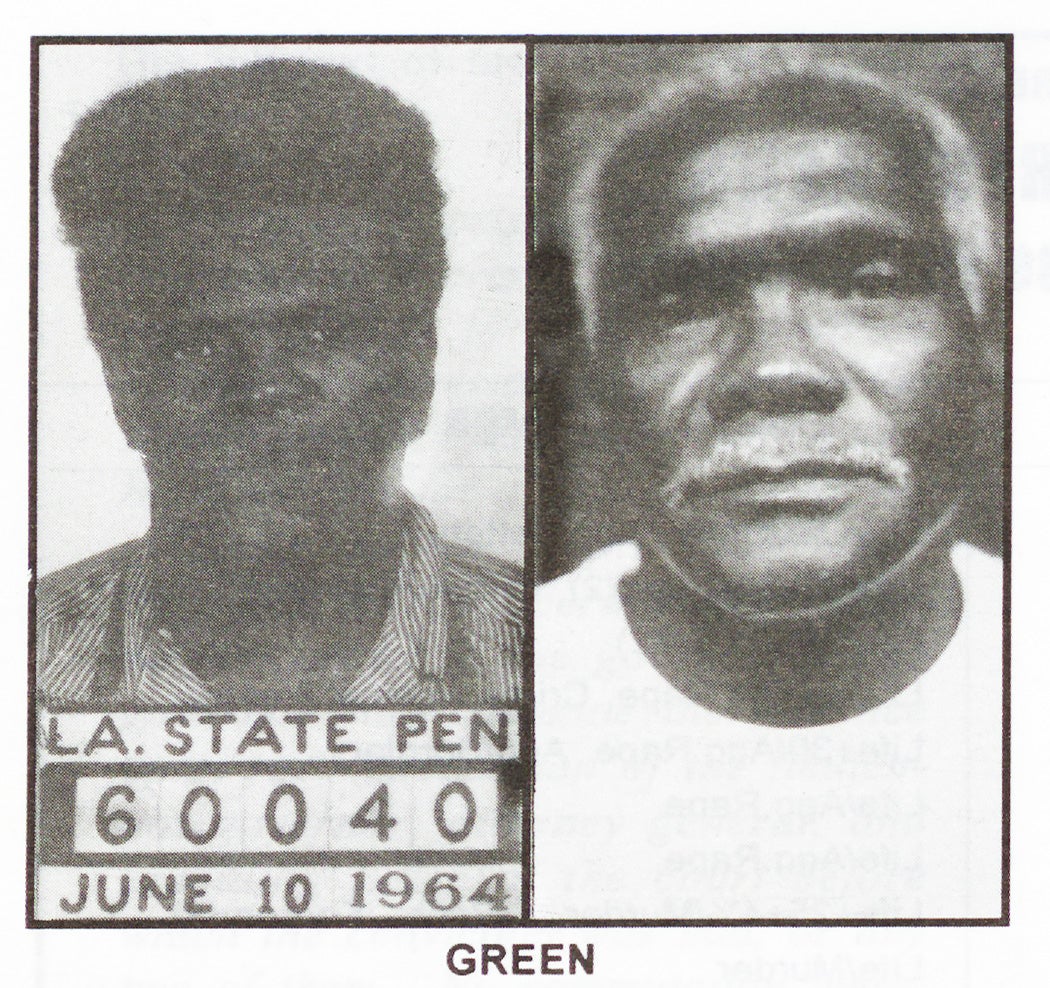
Some decided to sue. One of those was a man named Gilbert Green, who argued that he had kept his record clean in expectation of being released after 10 years and 6 months, just as he was promised. By 1994, an angry Green had been in prison over 30 years; he died there in 2003. Like all others who passed away inside, he is memorialized in an obituary in The Angolite, where his passion for painting is described as his life’s legacy. The arbitrariness of Green’s death behind bars, when many of his similarly situated peers were granted clemency before him, is undeniable.
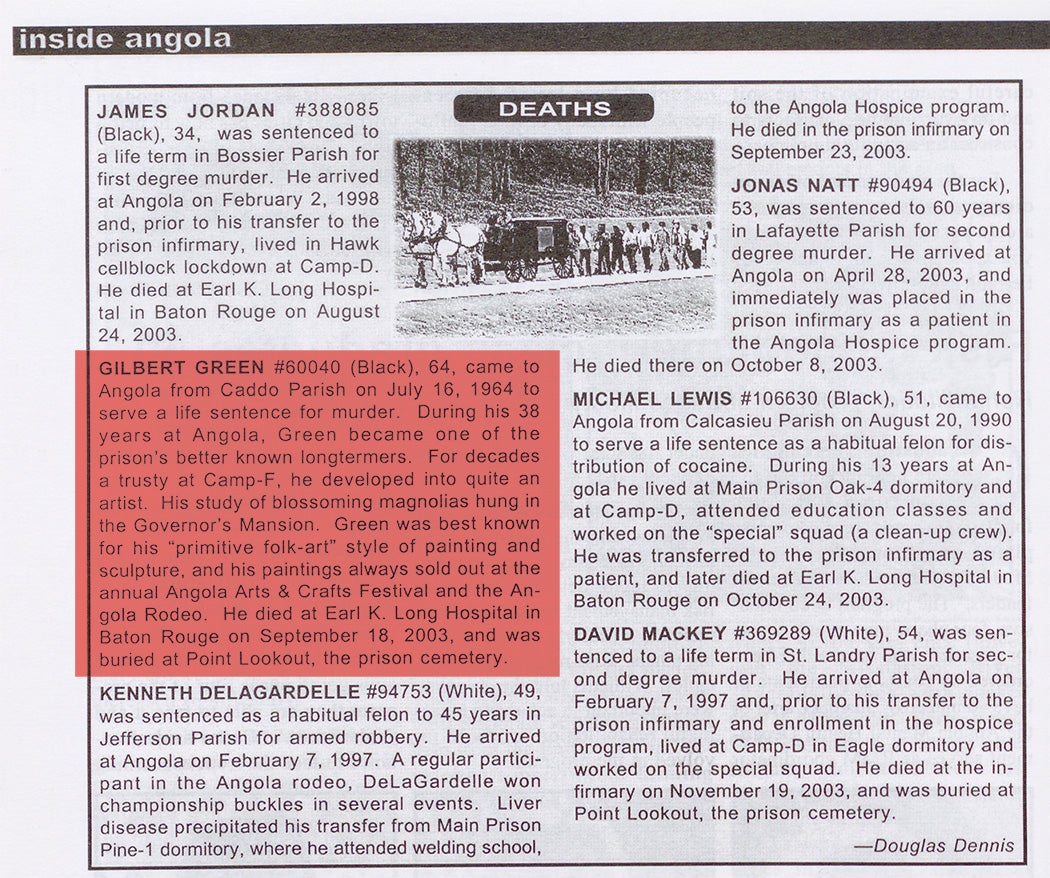
While the statistics do not show a slowing of excessively long sentences (two decades would hardly be considered long by today’s standards), there are now attempts to revisit sentences under mechanisms of post-conviction relief. Some of this reconsideration is happening in the city where excessive punitiveness started: New Orleans. The District Attorney Jason Williams, elected in 2020, opened an entire division to reexamine old cases, including 10/6’ers who remained in prison. Men have gotten out, like Leroy Grippen, who went to Angola in 1970, pleading guilty because he thought he would get out in 10 years. When he was finally released in 2021, he was 73.
The others remain stranded, at the mercy of other district attorneys less inclined to follow Williams’s lead. The Angolite puts the problem bluntly: “Good conduct nearly always did lead lifers to release. That penal principle no longer applies.” (Emphasis in original.) The author, using Wilbert Rideau (the long-time editor of The Angolite) as an example, points out that behavior inside holds no bearing on the release or parole of lifers. Take Leotha Brown, who has been in prison since 1964, and was featured in a film on prison music. The film speaks to the restorative power of music, its interviewees rife with regret and vulnerability. He died in 2010, still not free.
* * *
The most obvious salient point conveyed by The Angolite’s “The Living Dead” is the violence these individuals experienced and at times committed. The men The Angolite staffers interviewed confessed to murder and rape as well as abuse of authority. (The women experienced violence but were less likely to report having committed it.)
One man who was convicted of murder and sent to prison wound up as a “khaki back”–an incarcerated armed guard permitted to carry a gun inside Angola. While serving in that role, he shot and killed a man who threatened to sexually assault him, as well as another man sitting nearby. The Angolite devotes a dozen paragraphs to describing the murder of Ada Carey from the point of view of the two teenagers, Christensen and his co-defendant Westberg, as it does many other crimes, not holding back even when the details are gruesome.
As part of the story, Dennis also describes how narrowly the teens avoided becoming victims of vigilante justice as well as the violence they faced when they entered prison, still young. Westberg committed suicide in 1943 because, according to Christensen, he was afraid of being sent to the prison mental ward.
The two teens’ mental distress is hardly surprising considering what they endured, something courts do not take into account. Christensen describes to an interviewer how he was raped by older men when he got into prison; one man threatened him with a spoon carved into a sharp knife. “They did that to all the boys that come into prison then,” he said, as if it were a plain fact that the state was condemning teenagers to sexual assault as a matter of course.
At the time of his interview, Christensen was considered “special needs” and was safer housed alone; he spent a great deal of his prison sentence in Yankton, which was then the mental health prison. The Angolite writer Douglas Dennis theorizes that Christensen was probably there as a result of his repeated rapes, either for his own protection or because he developed, as he says, a “nervous disorder.” It is noted repeatedly that previous attempts to parole him were foiled by his “peculiar” behavior.
Christensen’s story is set in contrast to the longest-serving woman at the time, Betty Smithey, who was convicted in Arizona of killing a baby in her care when she was 20; she had been in prison for 31 years at the time of the story. (She was granted clemency in 2012.) The Angolite describes how Smithey bounced around foster care and jails throughout her childhood before kidnapping a baby, a crime that presaged the one that landed her in prison. Smithey is, in fact, so detached from the real world that the Angolite journalists are unable to interview her.
Even though Christensen was technically eligible for parole, he was not granted release until seven years after the publication of The Angolite article, in 2001. (One could speculate The Angolite piece had an impact.) Christensen went into a nursing home and died just over a year later. He was 77 years old. “Death in prison was his only option,” The Angolite wrote, understanding better than many the impossibility of Christensen ever adjusting to the free world after a lifetime behind bars. Sadly, obituaries like Christensen’s remain a staple in even recent issues of The Angolite.
Support JSTOR Daily! Join our new membership program on Patreon today.
